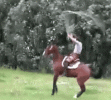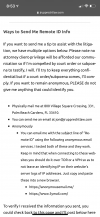The path to getting encryption has multiple components. Just to be clear, I'm talking about using public-key encryption. The drone encrypts the data with a private key and anyone with the public key can decrypt it. The drone gets the public key from a secure server that only authorized users can access. The app that LE and First Responders would use would be able to access the public keys.
The FAA's complaint with encryption is that it would be a barrier for LE to use. So the way to get encryption is to prove that it's not a real barrier to LE.
You are going to need an app to read Remote ID messages. Your phone isn't going to magically display RID messages. Something needs to be able to recognize them and display them to the user. This doesn't take into account that you will probably need an OS update to pickup RID messages. The networking stacks on Android and iOS will be probably be ignoring message types that they don't know or care about it. But that is a separate issue for the FAA to deal with. This will be clearer once the FAA provides the specifics of the RID messages.
To keep things simple, you don't create private/public keys for each drone. Otherwise, the RID App has to download all of them. So you create a set of 1000 keys with ID for each key. And they are good for three months in case someone leaks the keys. Once a quarter, the LE app needs to have Internet access to pull down the keys. The drone app also needs to connect once a quarter and it will download one of the public/private keys. It will send a data packet with the key id encrypted and the pilot's location encrypted.
When the RID app picks up a RID message, it takes the id key and uses that to figure out with public key is needed to decrypt the data. This would be completely transparent to the end-user. Only authorized users would see the pilot's location. Other users would not have access to that data. If for some reason, the LE user didn't have the latest public keys, the app could store the message and decrypt it when they could download the keys. That would be useful to prove or disprove a pilot was operating legally.
This is not 100% secure, but it provides a reasonable amount of security that would deter most people from getting at the takeoff location. There are other drawbacks to doing this, but it's a simple path to encryption and addresses the concerns that the FAA raised.













